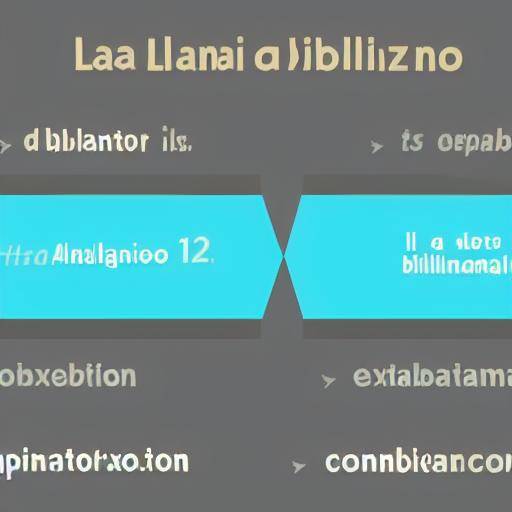
Introduction
Is it hard for you to focus on your tasks? Do you feel that the day does not have enough hours to complete your responsibilities? The Pomodoro technique can be the solution you are looking for. In this article, we will explore the Pomodoro technique in detail and how you can improve your productivity and time management. From its origin to practical advice and future predictions, you will discover how this revolutionary technique can transform your day to day.
History and background
The Pomodoro technique was developed in the late 1980s by Francesco Cirillo, who sought an efficient way to improve his personal productivity. The name "Pomodoro" comes from the tomato-shaped kitchen timers commonly used in Italy. Since then, it has acquired popularity worldwide for its simple and effective approach to time management.
This revolutionary approach is based on the premise of dividing work in short time intervals, usually 25 minutes, followed by short breaks. The simplicity of the Pomodoro technique has been its most attractive, as it adapts to a wide range of tasks and professions.
The Pomodoro technique has evolved over time, adapting to the demands of the digital era. Numerous applications and tools have been developed to facilitate their implementation, leading to greater acceptance in the field of labour and education.
Detailed analysis
Benefits of Pomodoro Technique
The Pomodoro technique offers a series of tangible benefits that directly impact productivity and time management. These benefits include:
- Better concentration and focus.
- Increased productivity by reducing procrastination.
- Increased time management by setting clear limits for tasks.
- Stress reduction by incorporating regular breaks.
In addition, studies have shown that Pomodoro technique can improve information retention, making it particularly useful to learn and perform creative tasks.
Current challenges and trends
Despite its many benefits, the Pomodoro technique also presents potential challenges. Some people find it difficult to adapt to strict time intervals, while others may feel pressure to meet the established timetable. In addition, in working environments imposed by other people, the implementation of the Pomodoro technique can be complicated.
Regarding current trends, the integration of Pomodoro technique with time management tools such as the GTD (Getting Things Done) method and productivity applications have become common. This shows how the Pomodoro technique has evolved to adapt to a constantly changing digital environment.
Comprehensive review
Best practices and practices
The Pomodoro technique can be applied to a wide range of tasks, from creative work to daily responsibilities. Some best practices to implement the Pomodoro technique include:
- Identify specific tasks for each 25-minute interval.
- Use the reward technique by completing a default number of Pomodoros.
- Customize the time intervals to adapt to the nature of the task.
In addition, the use of time tracking tools and careful rest planning can maximize the effectiveness of the Pomodoro technique.
Perspectives Experts and Concerns Futures
Time management and productivity experts have shown their support for the Pomodoro technique, highlighting their potential for improving individual and collective productivity. However, some concerns focus on the rigidity of the technique and its ability to adapt to different working styles.
In the future, advances in artificial intelligence and automation could influence the evolution of the Pomodoro technique, with the integration of virtual assistants that manage timers and rest autonomously.
Comparative analysis
The Pomodoro technique shares key similarities and differences with other time management and productivity approaches. Compared to more traditional methods, such as managing time based on task lists, the Pomodoro technique stands out for its approach in time intervals and deliberate pause management. On the other hand, unlike more holistic approaches such as the GTD method, the Pomodoro technique focuses on the sequential execution of time-focused tasks.
Accessible practical advice and recommendations
To successfully implement the Pomodoro technique, it is essential to follow some practical recommendations. Some useful tips include:
- Establish a work environment free from distractions.
- Use time tracking tools and timers.
- Adjust and experiment with the duration of the Pomodoros to adapt to different tasks.
Following these recommendations, you will be able to experience the benefits of Pomodoro technique in your day to day.
Industry perspectives and expert reviews
The views of the productivity and time management experts also indicate a trend towards the incorporation of Pomodoro-based practices into work environments and academics. The implementation of this technique is considered an effective strategy for improving individual and collective organization, which can be translated into higher levels of efficiency and quality in the work done.
Case studies and practical applications
Case studies have demonstrated the positive impact of Pomodoro technique in various labor and educational contexts. From software development teams to academic environments, the application of the Pomodoro technique has led to significant improvements in productivity, time management and quality of work done.
Future trends and predictions
As time and productivity management remains one of the main areas of interest to individuals and organizations, Pomodoro's technique is expected to play an increasingly important role in the future. Current predictions suggest greater integration of this technique with emerging technologies, which could lead to greater customization and adaptability of the technique to different working environments and styles.
Conclusion
In short, the Pomodoro technique has been consolidated as an effective tool for improving personal productivity and time management. From its origin based on a simple approach to its evolution in the digital era, the Pomodoro technique has demonstrated its positive impact on multiple scenarios. By adopting this technique and implementing practical recommendations, you can optimize your productivity and find a balance between work and rest.
Frequently asked questions
1. Is Pomodoro technique effective for all types of tasks?
Yes, the Pomodoro technique can adapt to a wide variety of tasks, from creative tasks to routine activities.
2. How much rest time is recommended between Pomodoro intervals?
The recommended rest is 5 minutes after each interval of 25 minutes. After completing four intervals, a longer break of 15-30 minutes is recommended.
3. Is the Pomodoro technique suitable for collaborative work environments?
Yes, the Pomodoro technique can be adapted to work on collaborative teams, allowing the synchronization of time intervals and breaks with other team members.
4. Can Pomodoro technique help reduce labor stress?
Yes, by promoting focused work intervals and regular breaks, the Pomodoro technique can help reduce stress and fatigue related to continuous work.
5. How can I measure my progress using Pomodoro technique?
There are numerous applications and tools that allow tracking and visualization of progress when using Pomodoro technique. These tools can record the number of completed Pomodoros, the duration of breaks and provide key performance data.
6. Can Pomodoro be adapted for students?
Yes, the Pomodoro technique is especially beneficial for students, as it helps to improve concentration, retention of information and time management while performing academic tasks.
By adopting the Pomodoro technique and customizing it according to your needs and preferences, you can experience a substantial improvement in your productivity and how to manage time.






















































